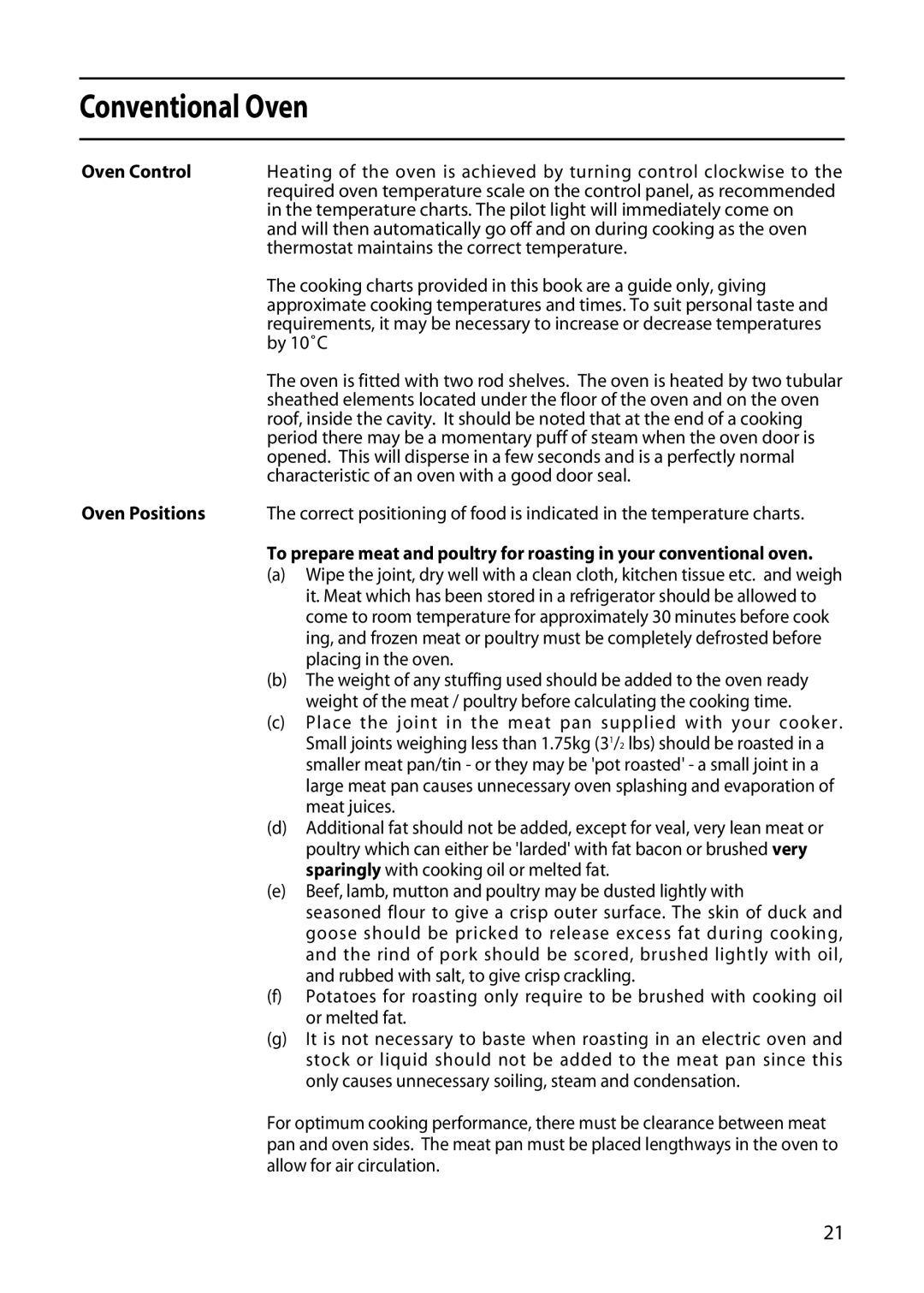Conventional Oven
Oven Control | Heating of the oven is achieved by turning control clockwise to the |
| required oven temperature scale on the control panel, as recommended |
| in the temperature charts. The pilot light will immediately come on |
| and will then automatically go off and on during cooking as the oven |
| thermostat maintains the correct temperature. |
| The cooking charts provided in this book are a guide only, giving |
| approximate cooking temperatures and times. To suit personal taste and |
| requirements, it may be necessary to increase or decrease temperatures |
| by 10˚C |
| The oven is fitted with two rod shelves. The oven is heated by two tubular |
| sheathed elements located under the floor of the oven and on the oven |
| roof, inside the cavity. It should be noted that at the end of a cooking |
| period there may be a momentary puff of steam when the oven door is |
| opened. This will disperse in a few seconds and is a perfectly normal |
| characteristic of an oven with a good door seal. |
Oven Positions | The correct positioning of food is indicated in the temperature charts. |
To prepare meat and poultry for roasting in your conventional oven.
(a)Wipe the joint, dry well with a clean cloth, kitchen tissue etc. and weigh it. Meat which has been stored in a refrigerator should be allowed to come to room temperature for approximately 30 minutes before cook ing, and frozen meat or poultry must be completely defrosted before placing in the oven.
(b)The weight of any stuffing used should be added to the oven ready weight of the meat / poultry before calculating the cooking time.
(c)Place the joint in the meat pan supplied with your cooker. Small joints weighing less than 1.75kg (31/2 lbs) should be roasted in a smaller meat pan/tin - or they may be 'pot roasted' - a small joint in a large meat pan causes unnecessary oven splashing and evaporation of meat juices.
(d)Additional fat should not be added, except for veal, very lean meat or poultry which can either be 'larded' with fat bacon or brushed very sparingly with cooking oil or melted fat.
(e)Beef, lamb, mutton and poultry may be dusted lightly with
seasoned flour to give a crisp outer surface. The skin of duck and goose should be pricked to release excess fat during cooking, and the rind of pork should be scored, brushed lightly with oil, and rubbed with salt, to give crisp crackling.
(f)Potatoes for roasting only require to be brushed with cooking oil or melted fat.
(g)It is not necessary to baste when roasting in an electric oven and stock or liquid should not be added to the meat pan since this only causes unnecessary soiling, steam and condensation.
For optimum cooking performance, there must be clearance between meat pan and oven sides. The meat pan must be placed lengthways in the oven to allow for air circulation.
21
